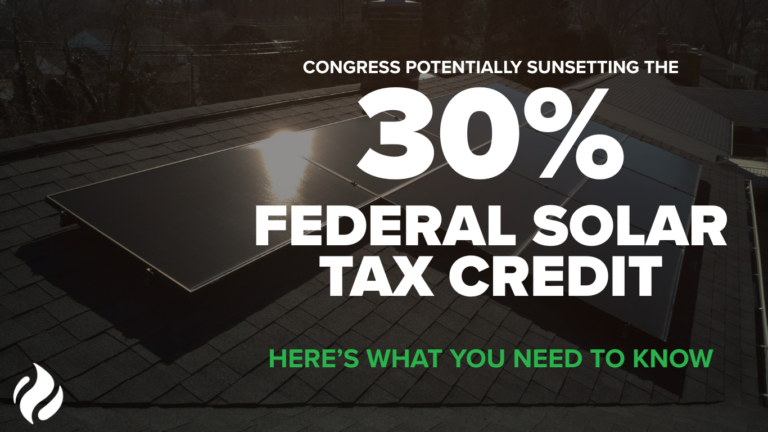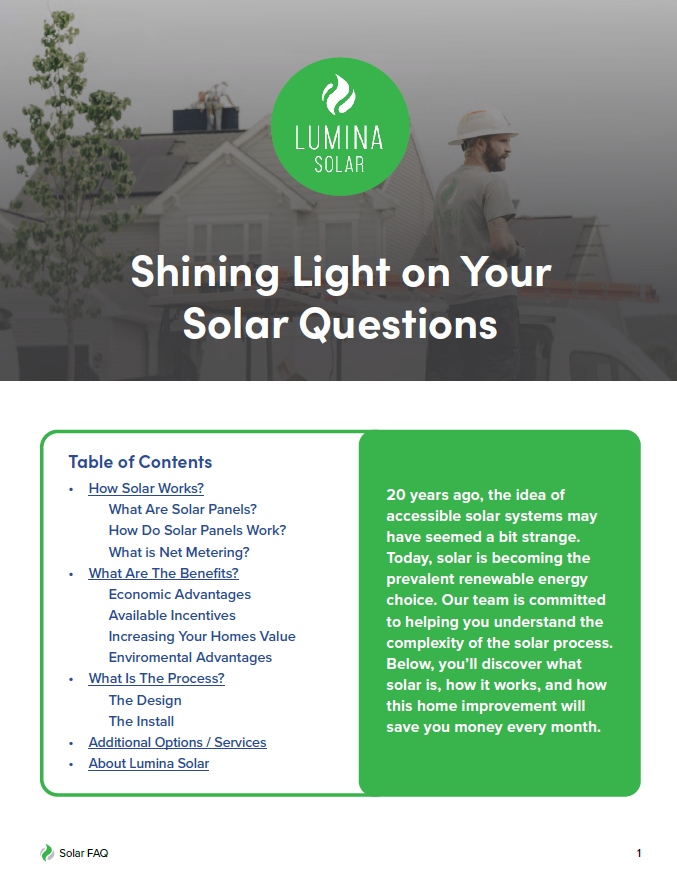Hurricane Ian touched down throughout the US south at the end of September, hitting communities across Puerto Rica, Florida, and more. The hurricane wreaked havoc across the region, causing millions of dollars in damage. As the hurricane season continues, more storms are possible. With aggressive adverse weather on the news, you may be wondering how these conditions affect solar panels? How is their energy production affected? And how does their durability stand up to heavy rains and debris? Today, we will go through the different types of common, adverse weather patterns and determine exactly what their effects on solar panels are.
Clouds and Overcast
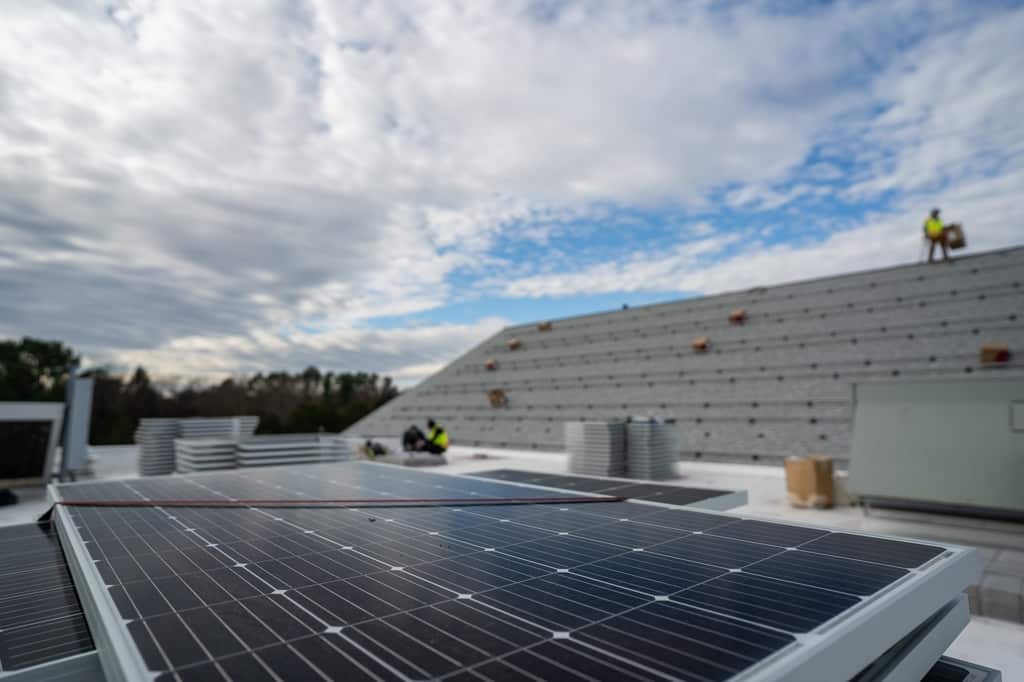
Contrary to common opinion, solar panels are still able to produce electricity when there is an abundance of clouds. Similar to getting sunburnt in cloudy weather, the sun’s rays can still penetrate the clouds and be absorbed by your solar panels. Depending on how overcast the sky is, solar panels will still produce energy, just at a lesser rate. Even on the cloudiest days, your solar panel system should still produce 10-25% of its capacity. If objects near your home are casting a shadow it means that sunlight is going through the clouds and is able to make contact with your solar panels. Interestingly enough, areas such as metropolitan Seattle and Germany are known for their high solar usage and generation despite persistently cloudy conditions.
Strong Winds
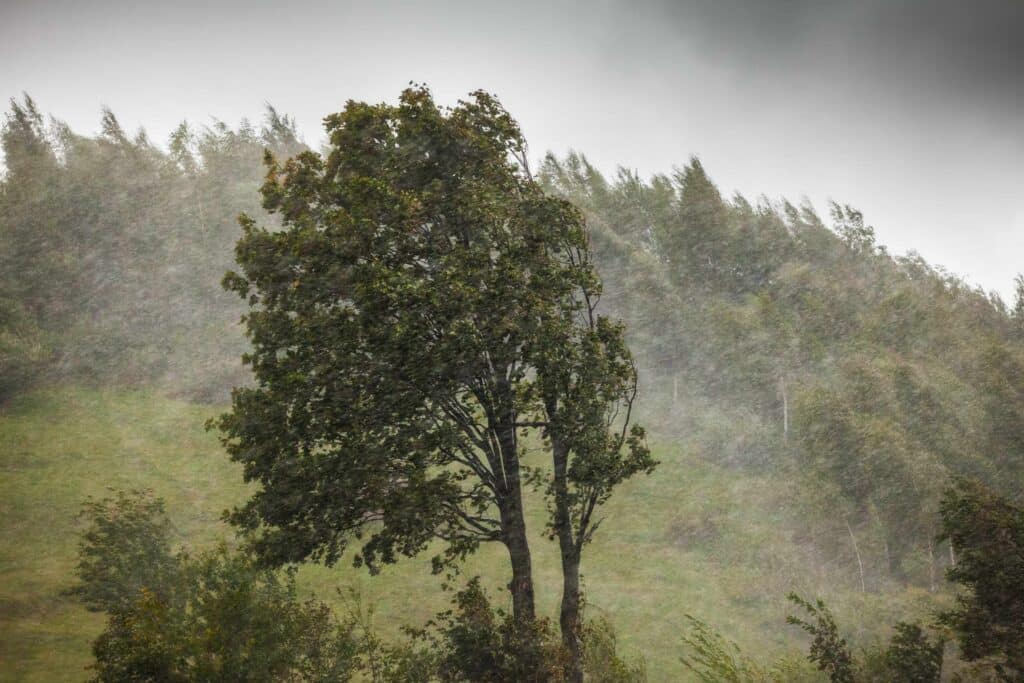
The majority of high-quality solar panels are built to withstand hurricane-level winds from 50 mph up to 150 mph, with states like Florida even requiring them to be capable of withstanding winds of 170+ in some municipalities. Once your solar panel system is mounted to your roof, under most circumstances you can be confident knowing it will not be pulled off or damaged by winds 50 mph and under. Strong winds have a higher risk of propelling objects and debris at high velocities, which are much more likely to damage your solar panels.
Heavy Rain & Hail
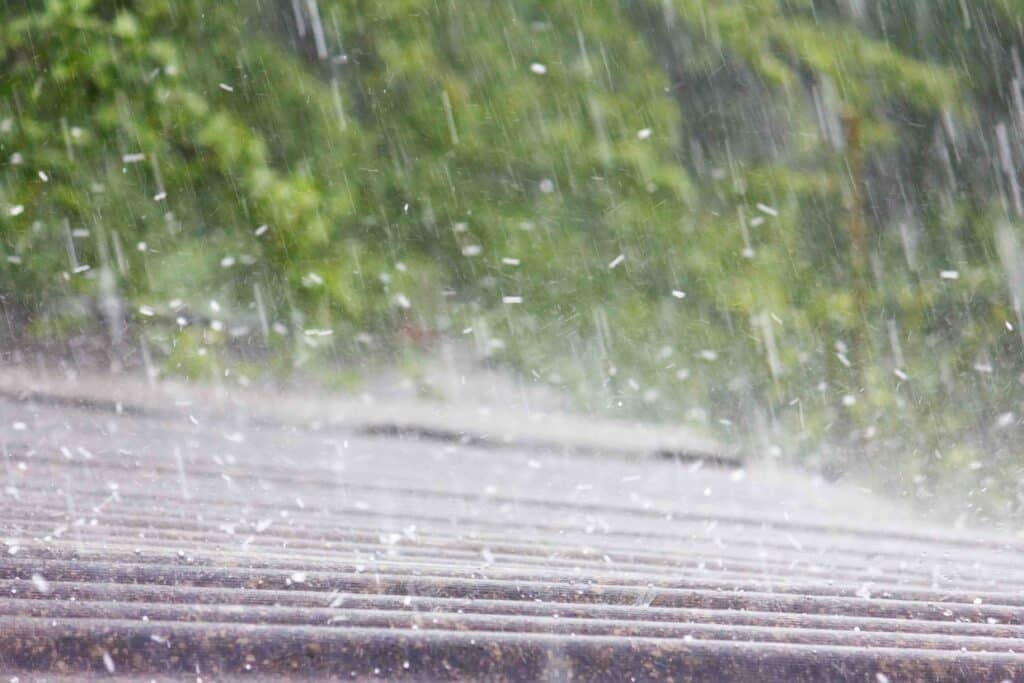
Heavy rain is hardly an issue for solar panels as opposed to the thick rain clouds associated with heavy rains that block the sunlight. Solar panel systems are built to be completely waterproof so that the electrical components are not in jeopardy from water damage. Instead, rain has the positive effect of washing debris and build-up off of your solar panels, allowing for more sunlight to make direct contact which will produce more energy. Hail, on the other hand, can cause damage to your solar panels if it is large and strong enough to penetrate the solar panels’ protective layer. Most solar panels are designed to withstand average-size hail storms and will still be able to produce energy depending on the thickness of the clouds.
Lightning
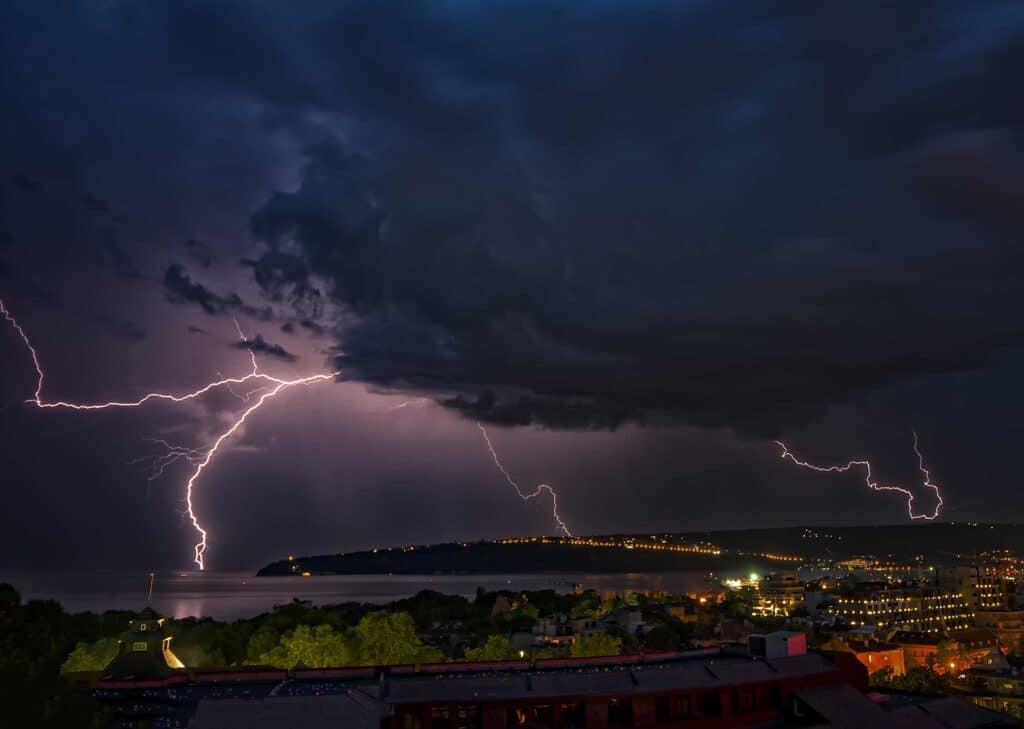
When your solar panel system is installed, it is required that the electrical circuit is grounded. Because of this, lighting will rarely be an issue. While a lightning strike might take out a crucial component of your local energy grid, your separate solar panel system will continue operating and producing energy for you and your home. If your solar panel system experiences a direct or nearby lightning strike, it could carry over to your inverter and cause a surge. Thankfully, almost all solar panel systems are equipped with surge protectors that will prevent further damage to your system.
Debris
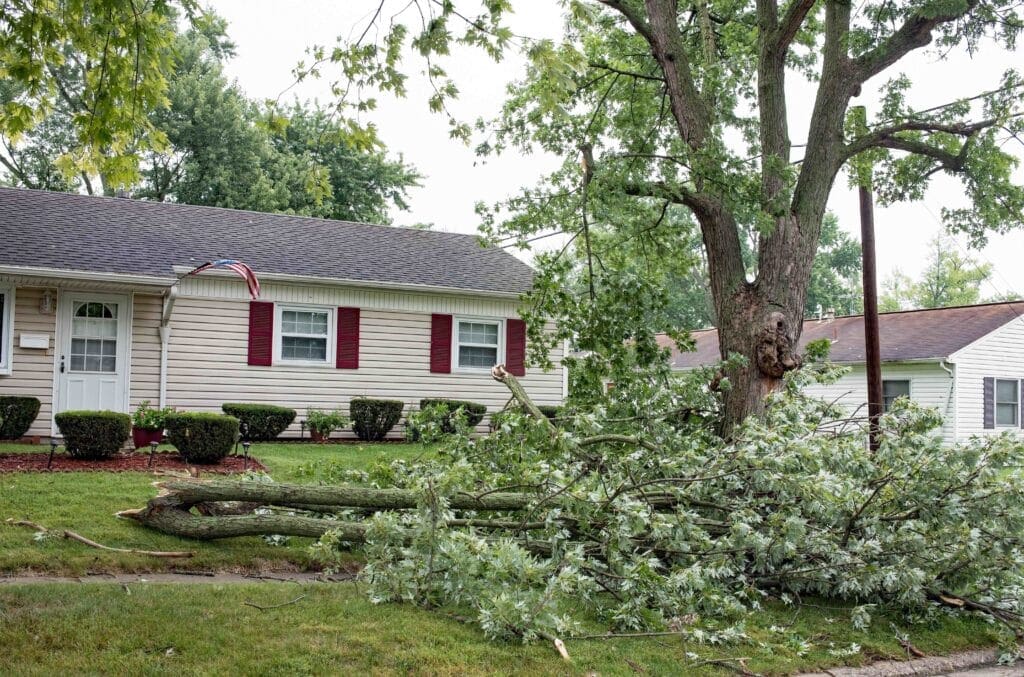
Debris includes anything that is solid that either makes contact or rests on your solar panels, blocking the number of PV cells that are absorbing sunlight. Strong winds brought on by storms can pick up all sorts of debris and even cause it to be launched at your solar panels. While the solar panels are durable and designed to withstand impacts, if the debris is large enough and is traveling fast enough, it will damage your solar panel. More commonly, debris comes in the form of sticks and leaves that won’t damage your solar panels but will block the sunlight and reduce efficiency.
Protection for Your Roof
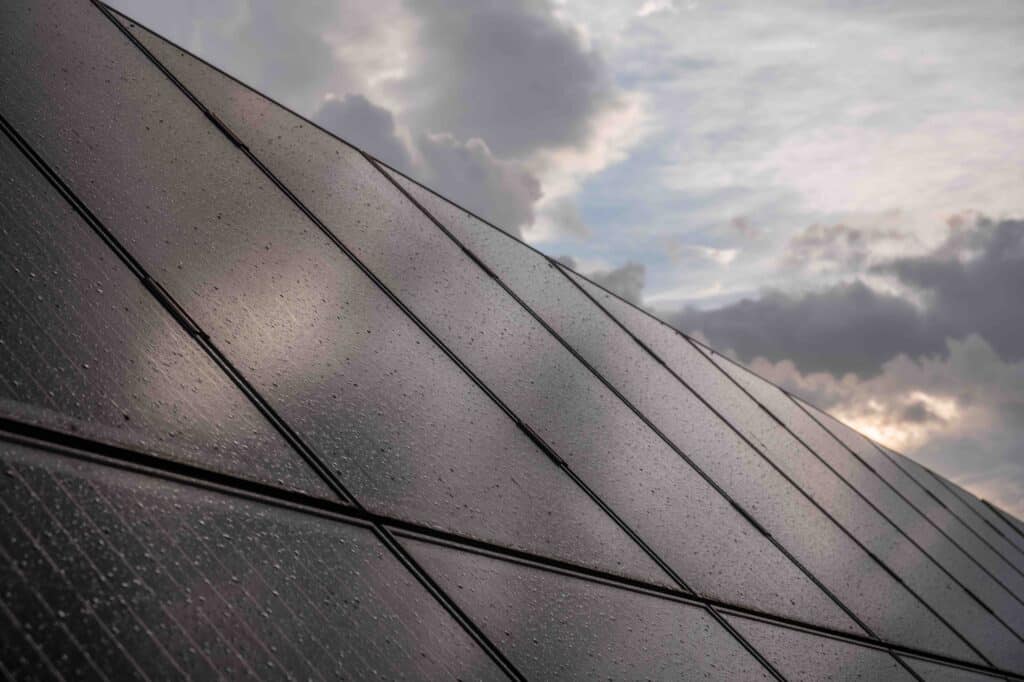
Since solar panels are built to withstand impact from debris and hail as well as endure all sorts of weather patterns, they actually serve as a layer of defense for your roof. Often overlooked is the damage caused to asphalt shingles from long exposure to hot sunlight. Over time, this exposure will lead to dry rotting and cracking, however, with the shade from solar panels, your shingles will enjoy an extended lifespan. A roof’s soft construction is far more vulnerable than solar panels, meaning that your solar panels will be able to withstand debris and hail that would otherwise cause damage to your roof.
High-Quality Solar Panel Installation
It is a common misconception that solar panels are fragile and unable to withstand or function in adverse weather conditions. In reality, they are designed to operate in even the harshest storms. While there is a limit to their durability, it is only in extreme cases that they will sustain damage. Typically, the only attribute that is generally affected by weather is the amount of sunlight available, which, even in cloudy weather, will still be able to generate energy. The solar panels that you choose are just as important as the company that you choose to install them. At Lumina Solar, our team of solar representatives will work closely with you to ensure that your solar panel installation is completed with a high level of professionalism, leaving you with the means to harness your own, clean and renewable, solar energy. Call or contact Lumina Solar to begin your journey toward solar energy today!


